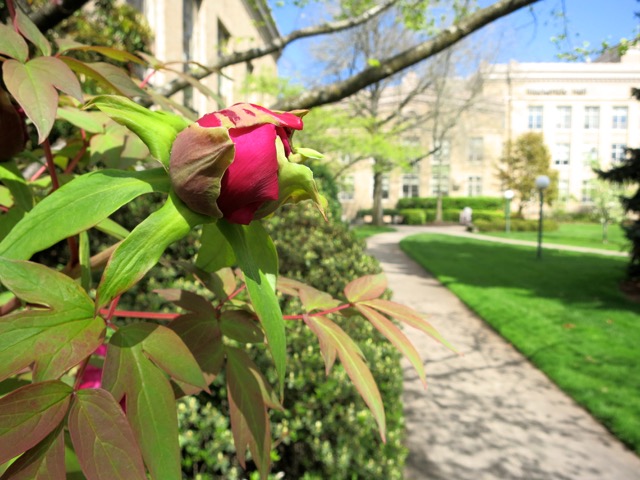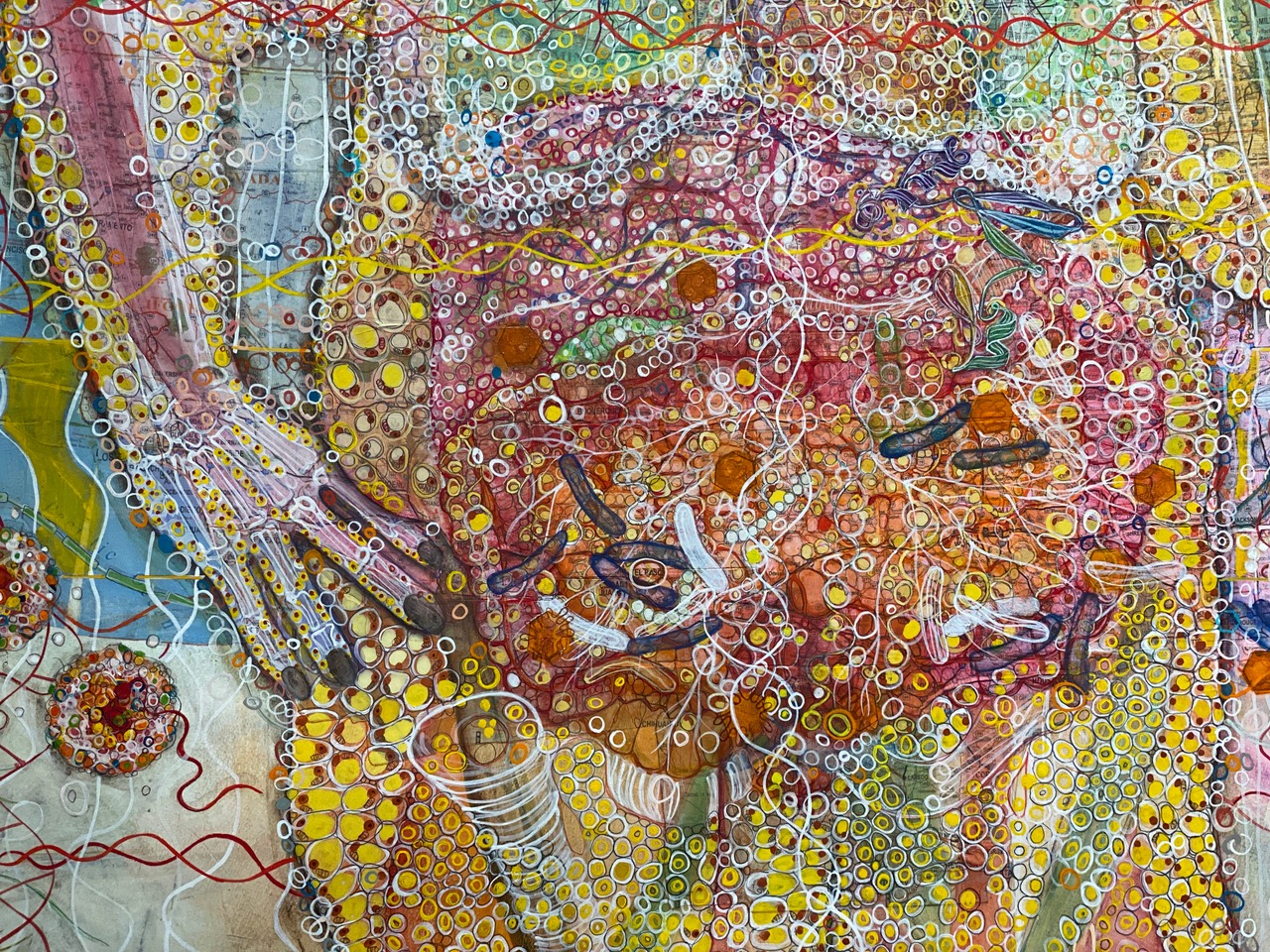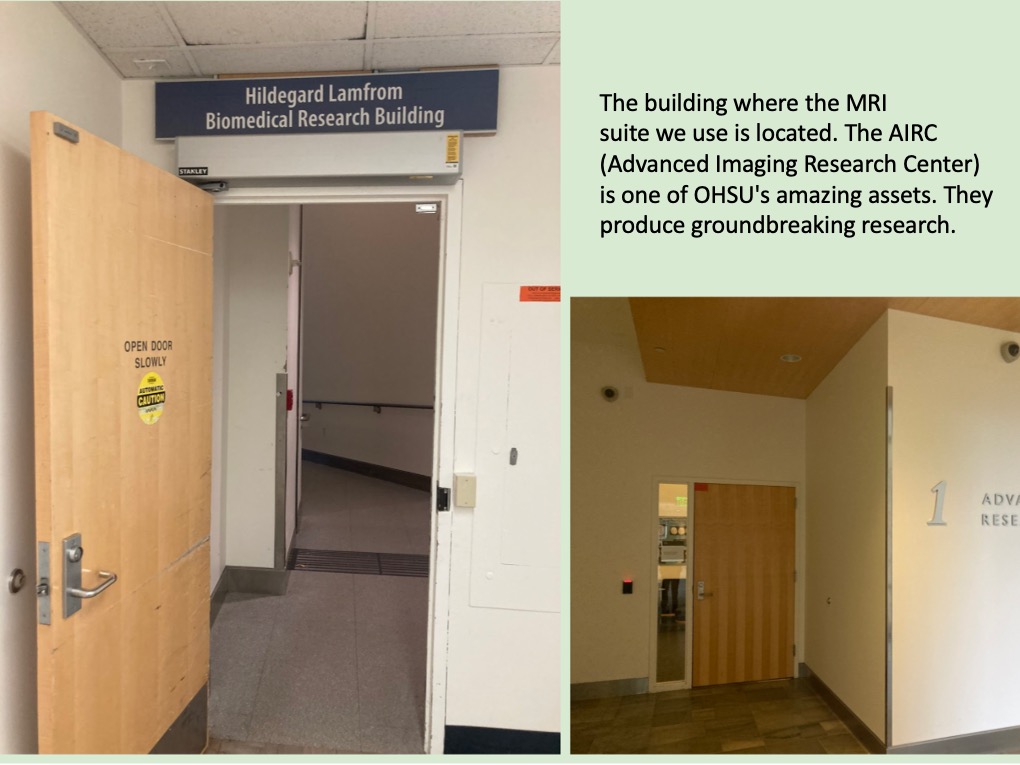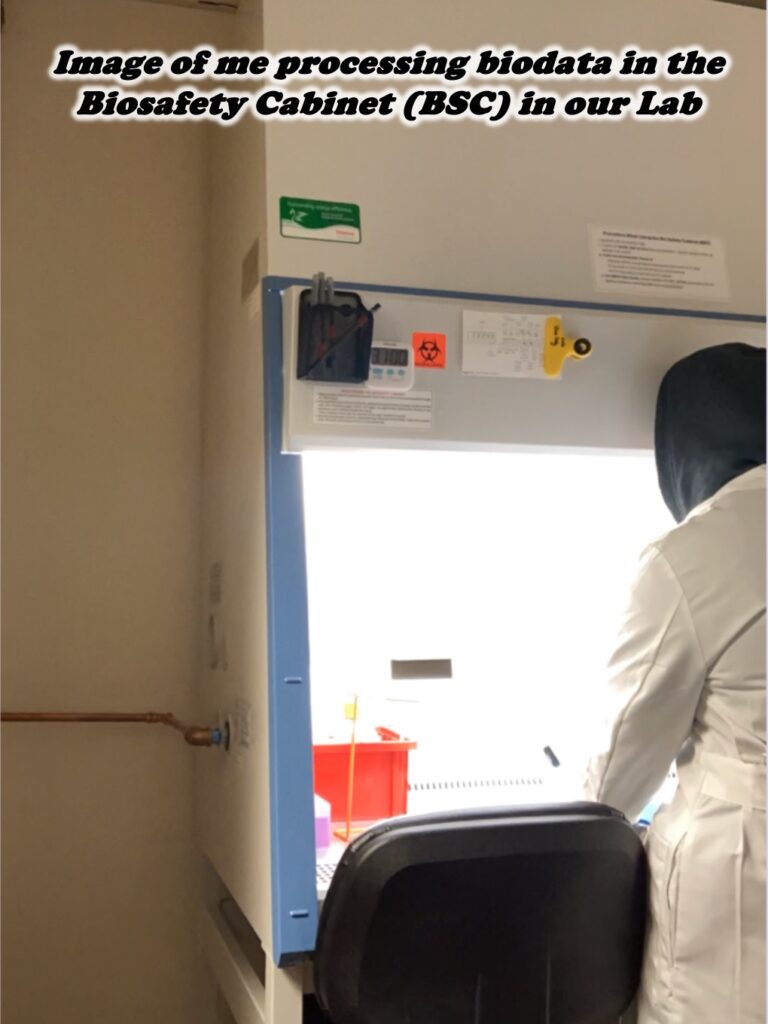Research on child brain development
Post by Salma Nassar, an undergraduate majoring in Psychology and minoring in Interdisciplinary Neuroscience and Community Health at Portland State University.

How I got involved in research
Academic planning is a passion of mine. Besides doing it for myself I often help friends form a trajectory towards their career and academic goals. My academic goal is to pursue a PhD in Clinical Psychology.
Clinical Psychology is the application of psychology for understanding, preventing, diagnosing and treating mental health disorders. Early on when I decided on this route, I found out that research experience is essential for graduate work in this field.
I strive to complete a PhD in Clinical Psychology as it allows the opportunity for a diverse range of career opportunities including the ability to pursue my passions in research, teaching and providing clinical care.
As a member of multiple minority populations (Muslim, Arab, Egyptian) I hope to bring the field of psychology to all my communities and provide culturally competent care and knowledge.
LEARN MORE: Clinical Psychology (APA)
LEARN MORE: American Arab, Middle Eastern, and North African Psychological Association
In spring term of 2024, I searched extensively for psychology research opportunities in Portland. Despite many unanswered emails I persevered and eventually landed on the website for Oregon Health & Science University (OHSU).

CHECK THE WEBSITE YOURSELF: OHSU Volunteer Opportunities in Research
Given all of the large research studies going on at OHSU, I was surprised to find only one application for one study open. I decided to take the initiative to search for other studies without openings listed and email the principal investigators.
Fast forward a few weeks and it worked!
I eventually got two interview opportunities with research teams, including one study with the acronym HBCD which stands for the HEALthy Brain Child Development) Study.

One piece of advice I want to share with anyone interested in research is don’t give up and it will never hurt to spend a few minutes writing an email. The worst they can say is no :).
What is HBCD?
The HBCD (HEALthy Brain Child Development) Study is a longitudinal study filling in the knowledge gaps in our understanding of brain development during the first decade of life, when brain development is exponential and highly responsive to environmental inputs. The HBCD study is designed to advance the understanding of the long-term effects of exposure to environmental, social and biological factors both during pregnancy and after birth on the brain development and behavior of the developing child.
We currently have a lot of research on effects of environmental, social, and biological factors that affect development. However, a longitudinal study on a national scale has not yet been done in the US on early brain development. Following a rise of substance use during pregnancy, as well as the additional stress created by the COVID-19 pandemic, the need for such research became clear. The success of the ABCD (Adolescent Brain Cognitive Development) Study, another large national longitudinal study, contributed to the launch of HBCD.

LEARN MORE: Brain Development and the Role of Experience in the Early Years
LEARN MORE: Infant social interactions and brain development: A systematic review
One environmental factor of high interest in the HBCD study is exposure to substances.
Of the total goal of 7,500 participants, OHSU’s goal is to recruit 300 (we recently hit the 100 mark!). We welcome parents and young babies into our lab of all different backgrounds to participate in our study. Diversity and equity are very important values for HBCD.
Besides the large focus on the impact of environmental factors, HBCD will also add to the existing literature on brain and overall early development. The HBCD study will inform families, healthcare providers, and policy makers on evidence-based practices, policies and interventions that could have large benefits. While substance use is a major focus, those who use substances will account for a quarter of the total participants. HBCD will also be exploring prenatal and early life resilience factors. In the paper linked directly below, Dr. Nora Volkow, Director of the National Institute on Drug Abuse and colleagues share the importance of identifying resilience factors in the context of policy implementation. Some specific resilience factors shared are access to greenspace and environments with strong social support. The wealth of HBCD can benefit everyone.
LEARN MORE: HEALthy Brain and Child Development Study (HBCD)
LEARN MORE: About the HEALthy Brain and Child Development (HBCD) Study
LEARN MORE: Development of structure and function in the infant brain

OHSU is one of 27 sites where participants are recruited and it’s where I volunteer.
The study also involves the HBCD Consortium Administrative Core (HCAC) and HBCD Data Coordinating Center (HDCC). The HCAC provides an organizational framework for the management, direction and coordination of such a large national study. Workgroups comprised of investigators from the data collection sites develop and revise procedures for collecting data. The HCAC organizes and disseminates these procedures to all sites. Data collected at the sites is sent to the HDCC for processing to prepare for data dissemination.
The HBCD study collects five different types of data: assessments (both from parents and from observed behavioral assessments), biospecimens, biosensors, two types of imaging MRI (Magnetic Resonance Imaging) and EEG(Electroencephalogram). The initial phase of data collection happens over the course of eight visits with five of those being in person and three being remote.

LEARN MORE: Study design, objectives, protocols and more!
Above is an image that HBCD created to help scientists and participants understand the components of such a complex study. The image demonstrates the different data we collect at different time points. Such collection does not come without highly comprehensive protocol.
I am most involved with biospecimen collection. We collect maternal specimens, including blood, nails, saliva and urine. We also collect specimens from the child: urine, stool and saliva. All these samples are sent to a biotechnology and data science company for initial processing and storage.
This study will analyze environmental exposure, genomics and epigenomics, and biomarkers that may influence neurodevelopment. Environmental factors to be analyzed include nutrition, both prenatal and postnatal as well as toxins. As for the genetic data, this is one of the places where the parents can decide whether they consent to genetic studies, thus for some visits we do not collect samples used for genetic analysis such as child and/or maternal saliva.
Stool is used to examine the gut microbiome and metabolome. Microorganisms in the gut are very important to metabolism, immune function, brain structure and function, health as well as child development.

Detail from: A Portrait of Veronica, Who’s in Control, 2020 by Monica Aissa Martinez
LEARN MORE: Your Inner Worm Bin
Overall, biospecimen collection will teach us how this biological data, integrated with detailed health and neurodevelopmental information, might help us identify risk factors, biological mechanisms, and intervention opportunities to improve outcomes for children.
LEARN MORE: Biospecimens in the HEALthy Brain and Child Development (HBCD) Study: Rationale and protocol
LEARN MORE: The development and structure of the HEALthy Brain and Child Development (HBCD) Study EEG protocol
All HBCD data will be made publicly available for scientists to analyze and for creating hypotheses regarding early brain development for further research. The first release, HBCD Data Release 1.0 will be available in early 2025!
Recruiting and retaining participants is complex and essential in a study like this. As I mentioned earlier, a large interest in this study is the effects of substance exposure along with a variety of other environmental factors. Historically those who use substances have both been excluded from research or scared away from participating.
Minority populations are also often (rightfully) skeptical of research as historically a lot of research performed on other people of their demographic has been unethical and harmful. It is very important to provide a good and safe experience for all participants to reform these narratives and to have diverse results as research is meant to represent everyone.
LEARN MORE: More than Tuskegee: Understanding Mistrust about Research Participation
LEARN MORE: Affirming NIH’s commitment to addressing structural racism in the biomedical research enterprise
What volunteering at HBCD is like
(Spoiler: we get to play with babies 

Right Image: As a muslim I pray 5 times a day. I am grateful to work in a place where I am able to observe the prayers that coincide with work time in a comfortable environment. Sometimes this is a quiet office, but if the weather is nice I’ll pray on the balcony or if it’s not I will pray in the break room as pictured.
At OHSU we are currently doing visits 1, 2, and 3 with visit 4s coming up very soon.
Visit 2s are very simple in that we are essentially only coordinating the time for MRI and during this time the mother fills in surveys and we collect biosamples. However, Visit 3s are quite a logistical challenge. Here we have to complete three major activities, MRI, EEG and behavioral assessments.
For the MRI babies have to be asleep and for the EEG and behavioral assessments they have to be awake….and not cranky for best results. So as a team we often have to decide to change the original schedule or omit a task due to the state of the participant.
This is one of the complications of a study involving infants. However regardless of the outcome we strive to ensure the best experience for all participants.

LEARN MORE: Advanced Imaging Research Center helps scientists make ground-breaking discoveries
What do I do in the lab?
My tasks are mainly related to data collection in two ways. The first is processing biospecimen samples. This is done in our lab in Baird Hall. For the biospecimen I track the times they were obtained and stored and sometimes the amount collected.

The other data I collect is during EEG, where I record information on the state of the participant during different tasks. I also record the state of the equipment.
What is EEG?
EEG stands for electroencephalography.
It is a non-invasive measurement of the brain’s electric fields. Electrodes are placed on the scalp and record electrical activity in the brain. EEG is exactly a century old, first used in July of 1924 by a neurosurgeon named Nikolai Guleke. It is a tool used for diagnosis and research and now largely benefits psychological research. In the case of our kind of research, we learn what parts of the brain are activated and how strongly they are activated by different stimuli. A resting state is also collected for the comparison of brain activity without the stimuli versus with the stimuli.
LEARN MORE: Electroencephalography
LEARN MORE: [Hans Berger (1873-1941)–the history of electroencephalography]
LEARN MORE: Nicolai Guleke–the founder and pioneer of neurosurgery in Thuringia
LEARN MORE: Electroencephalography (EEG) and Event-Related Potentials (ERPs) with Human Participants
During the EEG portion as well as the behavioral portion of visits I am sometimes called into the room to help to distract the baby. Or in other terms, play time!

For EEG we have to place the EEG cap on the baby’s head. This is quite the task as it is not the most comfortable thing and requires quite a bit of adjustment. I use bubbles and light up toys to orient the baby in a particular direction so that the RA can make the adjustments swiftly.
Little People Make a Big Impact 
Our participants don’t know it but they are part of a revolutionary study.

Our first years involved lots of changes. To know how different factors might impact development helps us prevent harm and optimize benefits. Research on infants has taught me a very important lesson: you are never too young or too small to make a difference.


